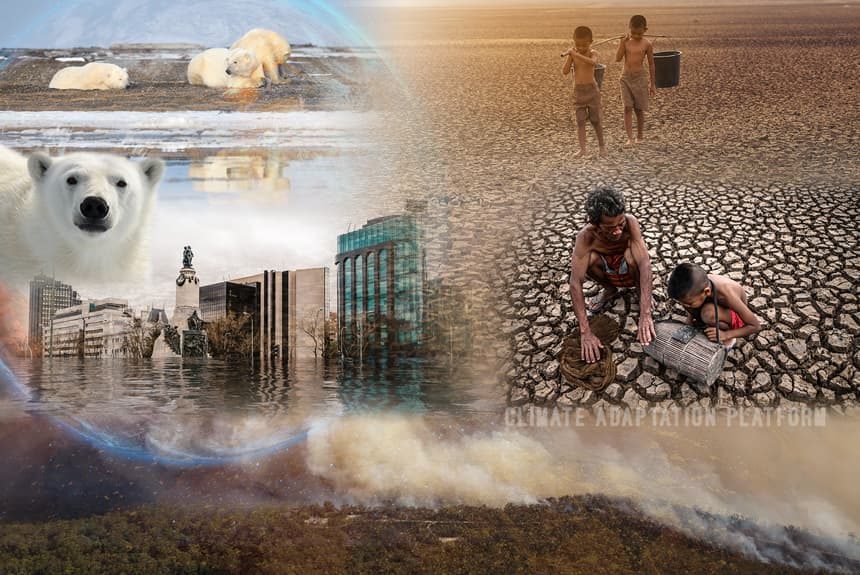As COP26 Glasgow participants discussed how to limit global warming, we discussed an interesting scenario of living in an increased 3°C temperature.
This year’s climate summit is the most important one since the COP21 in December 2015, when 196 parties signed the Paris Agreement. The agreement, a legally binding international treaty on climate change, aims to limit global warming to well below 2°C, preferably to 1.5°C compared to industrial levels. Achieving the Paris Agreement goal will require countries to peak their GHG emissions as soon as possible to achieve a climate-neutral world by 2050 (The Paris Agreement, 2021).
However, since the preindustrial levels, the world has already warmed by 1°C, resulting in climate disasters worldwide. The United Nations estimates that to keep warming under 1.5°C, countries must reach net-zero gas emissions by 2050.
The COP 26 climate summit aims to keep the 1.5°C target alive. In his opening address, Alok Sharma, the president of COP26, referred to the summit as “the last, best hope to keep 1.5 in reach” (Last, Best Hope, 2021).
However, the countries’ proposed plans will not achieve the 1.5°C goals. According to the 2021 United Nations Emissions Gap Report, current pledges will put the world on a path to a disastrous 2.7°C temperature increase.
The report says that the latest and updated NDCs of 121 countries show a considerable gap between their near-term commitments under the Paris Agreement and what would be needed to limit warming to well below 2°C, and aim for below 1.5°C.
“Compared to previous unconditional NDCs, the new pledges for 2030 reduce projected 2030 emissions by only 7.5 per cent, whereas 30 per cent is needed for 2°C and 55 per cent is needed for 1.5°C” and, “If all unconditional 2030 pledges are met, global warming by 2100 is estimated at 2.7C, 2.6°C if all conditional pledges are also implemented, and 2.2°C if all net-zero emissions pledges are added by 2100.
By contrast, current policies, insufficient to meet the 2030 pledges, are estimated to limit warming to 2.8°C (range 2.3–3.3°C).”
What a 3°C global temperature rise will look like
To help visualise what a 3°C world looks like, The Economist presents a 16-minute film that shows how disastrous this temperature rise could be. People worldwide will feel the effects of 3°C differently, and no one will be safe. These events will become common and severe due to prolonged heat waves, droughts, and extreme weather.
In Dhaka, a 3°C temperature will create deadly ‘wet-bulb temperatures’ where it will be impossible for people to cool themselves. No measure of climate adaptation will be sufficient, and the only way to survive is to leave the area.
Some cities in Pakistan and the United Arab Emirates are already experiencing these fatal wet-bulb temperatures. By the end of the century, the tropics, the Persian Gulf, parts of Mexico, and the southeastern United States could also reach dangerous hot-bulb temperatures.
High temperatures will alter migration patterns, and climate disasters exacerbate why people migrate to other countries. In a 3°C world, tens of millions of people will be displaced by disasters made worse by climate change.
People in the countryside flock to the cities, and if they can get to a developed world with high adaptive capacity and better resources, they will. The migration of people into the cities would mean more competition for fewer resources.
Water will become a highly contested resource and a source of conflict for many nations.
Watch the 16-minute video below:
Source Citation:
The Paris Agreement. (2021). United National Climate Change. Retrieved from https://unfccc.int/process-and-meetings/the-paris-agreement/the-paris-agreement
United Nations Environment Programme (2021). Emissions Gap Report 2021: The Heat Is On – A World of Climate Promises Not Yet Delivered. Nairobi. Retrieved from https://wedocs.unep.org/bitstream/handle/20.500.11822/36991/EGR21_ESEN.pdf
‘Last, Best Hope to Keep 1.5 Degrees in Reach’: COP26 Summit Chief Alok Sharma. (31 October 2021). News18. Retrieved from https://www.news18.com/news/world/last-best-hope-to-keep-1-5-degrees-in-reach-cop26-summit-chief-alok-sharma-4387286.html
This is what a 3°C global warming looks like. (2021, October 2021). The Economist. Retrieved from https://www.economist.com/films/2021/10/30/this-is-what-3degc-of-global-warming-looks-like



Leave a Reply